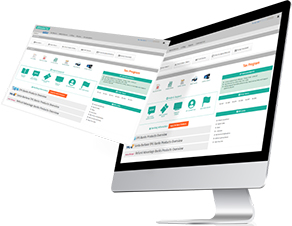As a tax preparer, obtaining a Preparer Tax Identification Number (PTIN) is a crucial step in establishing your credibility and compliance with the Internal Revenue Service (IRS).
In this article, we will delve into the details of what a PTIN is, why it is necessary, and the step-by-step process of obtaining and renewing a PTIN. Understanding the requirements and procedures involved will ensure that you can confidently prepare federal tax returns for compensation.
Understanding the PTIN: What It Is and Who Needs One
A PTIN is a unique identification number issued by the IRS to individuals who prepare or assist in preparing federal tax returns for compensation. It serves as an identification tool for tax professionals and helps the IRS maintain a record of tax preparers.
It is important to note that a PTIN is not exclusively required for full-time tax preparers but extends to anyone who offers tax preparation services in exchange for compensation.
Paid tax preparers, as well as volunteer tax preparers who receive compensation, must obtain a PTIN. This includes individuals working in accounting firms, tax preparation companies, or those providing freelance tax preparation services.
By acquiring a PTIN, tax preparers showcase their commitment to professionalism and adherence to regulatory standards.
Eligibility Requirements for a PTIN
Before applying for a PTIN, it is essential to ensure that you meet the eligibility requirements set by the IRS. These requirements encompass personal information, tax compliance history, and any felony convictions.
The IRS conducts a thorough background check to maintain the integrity of the tax preparation industry. To be eligible for a PTIN, you must provide accurate personal information such as your full legal name, mailing address, date of birth, and contact details.
Additionally, you are required to provide your Social Security Number (SSN) to confirm your identity and facilitate tax compliance verification. The IRS also evaluates your tax compliance history by checking your previous tax obligations.
It is crucial to have a clean tax record and address any outstanding tax liabilities before applying for a PTIN. Furthermore, the IRS assesses any felony convictions when reviewing PTIN applications. While a felony conviction does not automatically disqualify you from obtaining a PTIN, it is important to disclose this information and provide additional details if necessary.
Failure to provide accurate information or omitting felony convictions can result in serious consequences, including the rejection of your PTIN application or disciplinary action by the IRS.
Documents Needed to Apply for a PTIN
To complete the PTIN application process, you will need to gather specific documents and information. Ensuring that you have these documents readily available will facilitate a smooth and efficient application process.
Personal identification documents, such as a valid driver’s license or passport, are required to verify your identity. Additionally, you will need your Social Security Card as proof of your Social Security Number.
As part of the application process, you will be asked to provide details of your previous year’s tax return. This information is essential for the IRS to assess your tax compliance history and verify your qualifications as a tax preparer.
If you own a tax preparation business or practice, you will need to provide information about the business, including its name, address, and Employer Identification Number (EIN), if applicable. Gathering these details in advance will help expedite the application process.
Step-by-Step Guide to Applying for a PTIN
To begin the process of applying for a PTIN, you must first gather all necessary personal and professional information, including your Social Security Number, educational qualifications, and any prior experience working with tax returns.
Once you have this information, you can create an online account with the IRS, complete the online application form, and pay the required fee.
After submitting your application, you will receive a confirmation from the IRS with your new PTIN, which you can then use to prepare tax returns for clients legally. Let’s explore the step-by-step process in detail.
Creating an Account on the IRS Website
To begin the PTIN application process, navigate to the IRS website and locate the PTIN application section. You will need to create an account, providing necessary personal information such as your full name, contact details, and SSN.
Filling Out the PTIN Application
Once you have created your account, you can proceed to fill out the PTIN application. The application form will require you to provide detailed information about your professional credentials, tax compliance status, and any felony convictions.
Be prepared to answer questions about your tax preparation experience, educational background, and any professional certifications you may hold.
It is crucial to ensure the accuracy and completeness of the information provided to avoid any delays or complications in the application process.
Submitting the Application and Paying the Fee
After completing the PTIN application, review the information for accuracy and submit it electronically. At this stage, you will also need to pay the PTIN application fee, which the IRS determines. The fee can be paid online using various payment methods accepted by the IRS.
In case you are unable to afford the fee, the IRS provides options for requesting a fee waiver or installment payments. Exploring these options will ensure that financial constraints do not hinder your ability to obtain a PTIN.
Receiving and Activating Your PTIN
Upon successful submission of your PTIN application and payment of the fee, the IRS will process your application. The estimated time for receiving your PTIN may vary, but typically it takes around four to six weeks.
You will receive your PTIN through the preferred method of communication chosen during the application process, such as mail or email. Once you receive your PTIN, you must activate it by following the instructions provided by the IRS. It is important to activate your PTIN to ensure its validity and maintain compliance with IRS regulations.
PTIN Renewal Process
Obtaining a PTIN is not a one-time process. It is essential to renew your PTIN annually to continue offering tax preparation services legally. The renewal process ensures that your information is up to date and allows the IRS to maintain accurate records of tax preparers.
The PTIN renewal period typically begins in October each year. It is crucial to renew your PTIN before the deadline to avoid any disruptions in your tax preparation activities. The renewal fee is subject to change and will be specified by the IRS.
Neglecting to renew your PTIN in a timely manner can result in penalties and limitations on your ability to prepare federal tax returns for compensation. Therefore, staying proactive and keeping track of the renewal period is vital to maintaining your status as a tax preparer.
Tips for a Smooth PTIN Application Process
When applying for your PTIN, it’s important to make sure you have all the necessary information ready beforehand, such as your social security number and personal identifying information.
Additionally, it’s essential to double-check all the details on your application for accuracy, including your business information and tax preparation specialty.
You’ll have a smoother and quicker PTIN application process by following these steps. To ensure a smooth PTIN application process, consider the following tips:
- Double-check all information: Accuracy is key when filling out the PTIN application. Review all details before submission to minimize errors.
- Keep track of documents: Maintain a record of all relevant documents, such as identification and tax compliance records. This will facilitate a seamless application process.
- Anticipate processing delays: Understand that the processing time for PTIN applications may vary. Plan ahead and allow ample time to review and approve your application.
- Check application status: Regularly check the status of your PTIN application through the IRS website. This will keep you informed about any updates or additional steps required.
Navigating the PTIN Process Successfully
In summary, obtaining a PTIN is a crucial step for tax preparers. It enhances your credibility and ensures compliance with IRS regulations.
By understanding the requirements, gathering the necessary documents, and following the step-by-step application process, you can successfully obtain and renew your PTIN.
Take the next step toward a successful tax preparation career by obtaining your PTIN and working with UltimateTax. Visit our website or contact us today to learn more and embark on a journey of professional growth.






